Dave Weaver and I welcomed a healthy crowd last Wednesday, anticipating a good showing of Neotropical migrants on Plum Island. We started the program with a look at this website, where you can see the surface winds represented over the entire globe. Following these patterns and how the systems are moving during migration can help you predict when waves of migrants might show up at any given place, as spring migrants enlist southerly winds to assist their journey north. This week, the sunny Wednesday most of you enjoyed was overwhelmed here on the coast by a cold easterly breeze, bringing fog in off the ocean. It meant that we had all kinds of weather, some of it not conducive to insectivores. We got a good start, however, with a White-crowned Sparrow under the bushes right outside the Joppa Flats window.
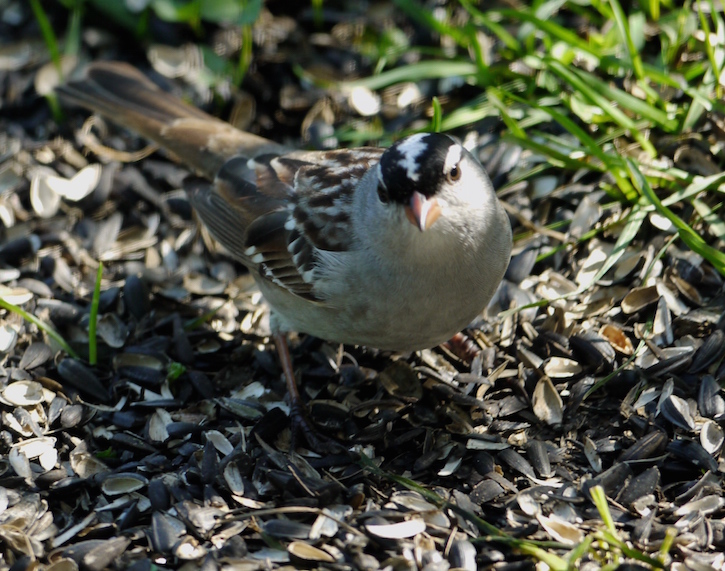
White-crowned Sparrow – Barbara Silver
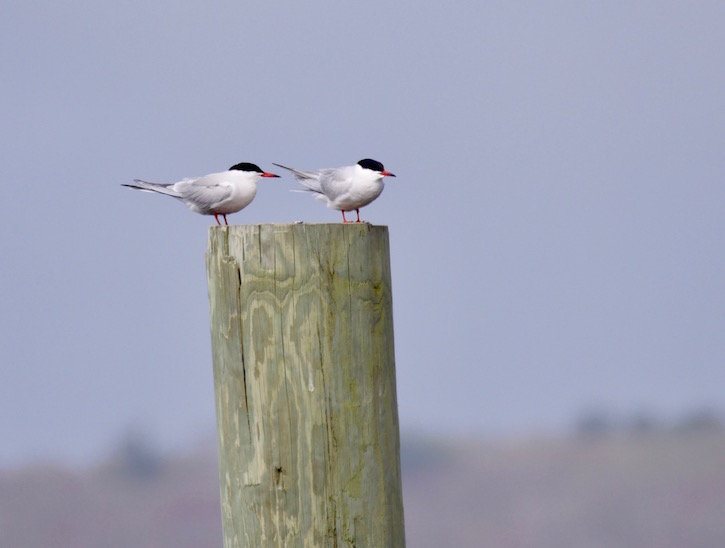
Common Terns – Andrea LeBlanc
At parking lot #1 on the Parker River National Wildlife Refuge, we paused, as we will throughout the spring, to soak in the benign reality of Purple Martins. These largest of our swallows have lived alongside humans for thousands of years, their soft warbling trills saying “peace.” The first peoples of North America hung gourds for Purple Martins to nest in, just as we do now. After checking in with the martins and the Pine Island platform’s Ospreys, we noticed a Brown Thrasher belting it out from atop a dome-shaped treelet on the nearest midden (old shell pile). Never was there a prouder thrasher. A couple of early Common Terns sat on the pilings at the boat ramp, and two Blue Jays flew purposefully north — perhaps part of the 11% of them that migrate?
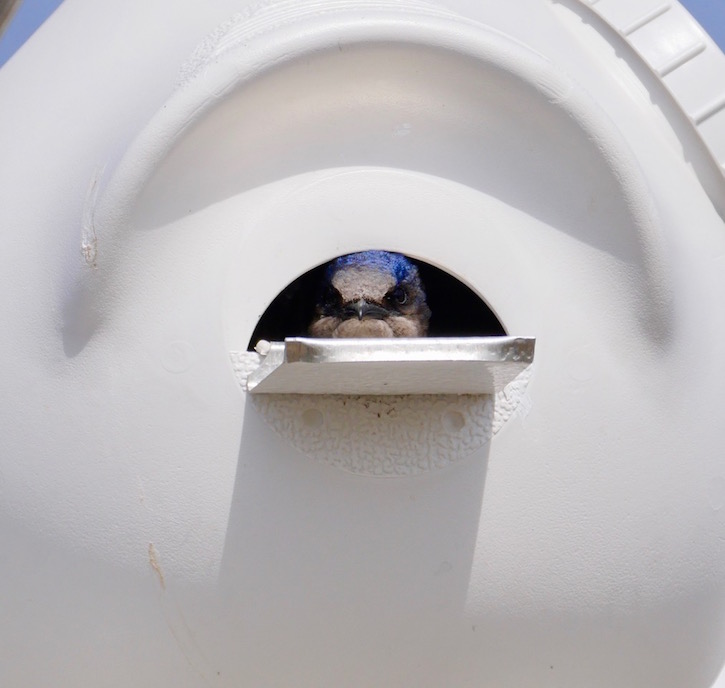
Purple Martin – Andrea LeBlanc

Brown Thrasher – Bob Minton
As we drove south, many songs greeted us along the road. Eastern Towhees were in abundance, and we heard plenty of Yellow Warblers and other migrants. The pannes are a good spot to see migrants when we have a crowd, and we had our first nice mixed flock there. The majority of the birds were Black-and-white Warblers, with one magnificent Blackburnian Warbler, some Yellow-rumped Warblers, a Ruby-crowned Kinglet, Common Yellowthroats, and a couple of Northern Parulas. Catbirds were tuning up for the season. On the panne side, we found the obligatory Killdeer, plenty of Willets, and a few Greater and Lesser Yellowlegs. Clots of Tree Swallows dashed around at the south end of the main panne.
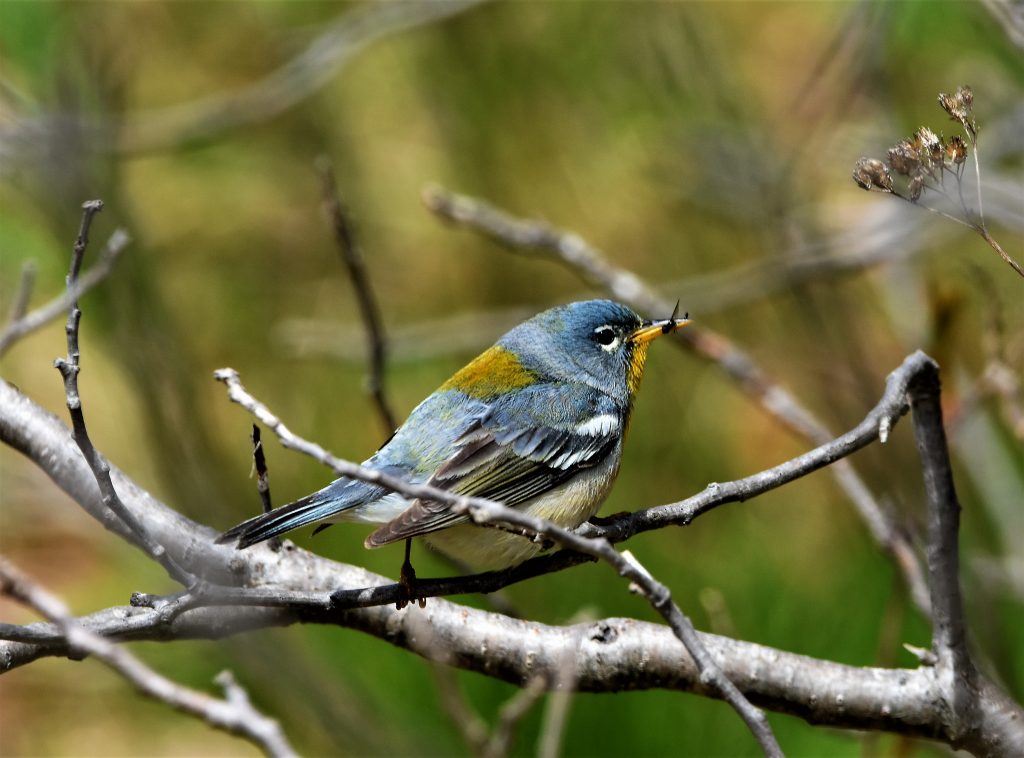
Northern Parula – Susan Balser
On to the S-curves, a favorite warbler zone, where this week there were very few warblers. At this point, the ocean-cooled air was starting to put a damper on the bird activity, but we kept moving along, checking briefly for flocks. One carload got great views of a Bobolink near The Warden’s. At Hellcat, we had to park along the road as close as we could get to the full lot. Some of us saw a bright male Baltimore Oriole singing on the edge of the parking lot. We ran into about three of them, here and there. The dike was a bit barren , with a few remaining White-throated Sparrows kicking in the thicket. Back toward the boardwalk, though, warblers started picking up, just not new ones. We proceeded along the road, finding good views of Purple Finches, who were singing everywhere, along with Brown-headed Cowbirds, performing their relaxed pair behaviors.

Purple Finch – Susan Balser
A few of us who got ahead found a Black-throated Blue Warbler and an American Redstart. Those who stayed behind in the parking lot discovered a great little flock that included a wonderful Magnolia Warbler. After some fairly birdless searching, I told Patti Wood in no uncertain terms that she would take us to the Magnolia – and she did! So ended our outing, with a lovely little flock, with the Magnolia Warbler, two parulas, and plenty of Black-and-white Warblers hanging around a protected, sunny glade north of the Hellcat lot. A Ruby-throated Hummingbird made a few little shows before taking off. Amazingly, we had made great use of three perfectly good hours of a mid-week morning.
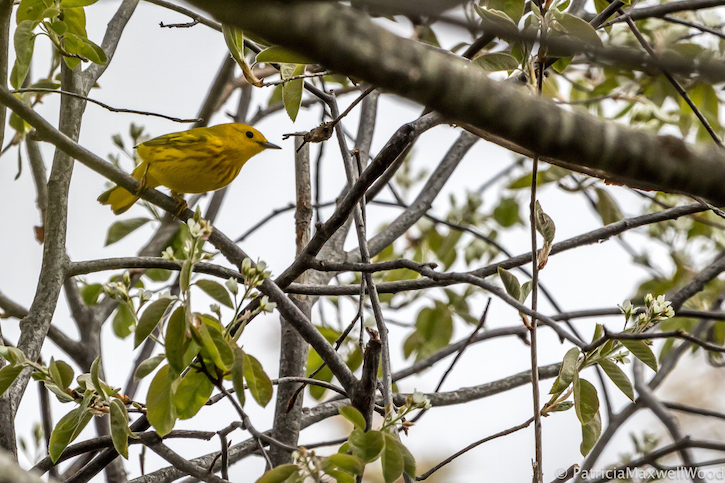
Yellow Warbler – Patti Wood
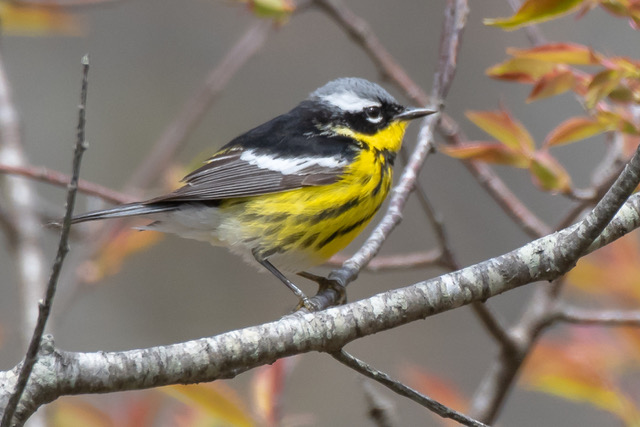
Magnolia Warbler – Bob Minton
Our list:
Canada Goose (1)
American Black Duck (2) – main panne.
Double-crested Cormorant (2)
Great Egret (3)
Snowy Egret (1)
Osprey (2) – nesting platform, w. lot #1.
Killdeer (1) – pannes.
Greater Yellowlegs (2) – pannes.
Willet – common.
Lesser Yellowlegs (2) – pannes.
Herring Gull
Common Tern (2) – boat ramp, w. lot #1.
Rock Pigeon
Mourning Dove
Ruby-throated Hummingbird (1) – Hellcat.
Blue Jay (2) – migrating; lot #1.
Purple Martin (~ 12) – lot #1.
Tree Swallow (~ 20)
Barn Swallow (2)
Black-capped Chickadee (1)
Marsh Wren (2) – heard, marsh n. S-curves.
Ruby-crowned Kinglet (1) – thicket, e. main panne.
American Robin (5)
Gray Catbird (~ 5) – various, roadside.
Northern Mockingbird (1) – Hellcat.
Brown Thrasher (2) – 1, middens; 1, Hellcat parking lot entrance.
European Starling
Black-and-white Warbler – common.
Common Yellowthroat – common.
American Redstart (1) – Goodno crossing.
Northern Parula (3)
Magnolia Warbler (2) – 1, n. Goodno crossing; 1, Hellcat parking lot.
Blackburnian Warbler (1) – thicket, e. main panne.
Yellow Warbler – common.
Black-throated Blue Warbler (1) – n. Goodno crossing.
Yellow-rumped Warbler – common.
Eastern Towhee – common.
Song Sparrow (4)
White-throated Sparrow – common.
[White-crowned Sparrow (1) – Joppa Flats feeders.]
Northern Cardinal (~ 5)
Bobolink (1) – The Warden’s.
Red-winged Blackbird – common.
Common Grackle – common.
Brown-headed Cowbird – common.
Baltimore Oriole (3) – various.
Purple Finch (~ 7) – ~ 5 n. Goodno crossing; 2, vicinity Hellcat parking lot.
American Goldfinch (3)
House Sparrow

